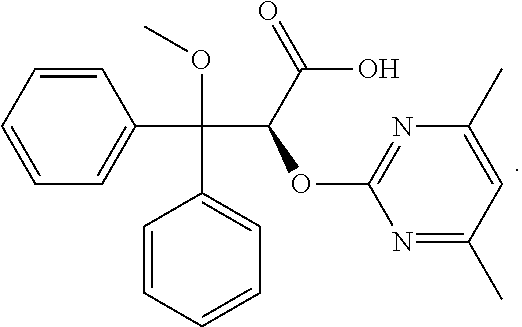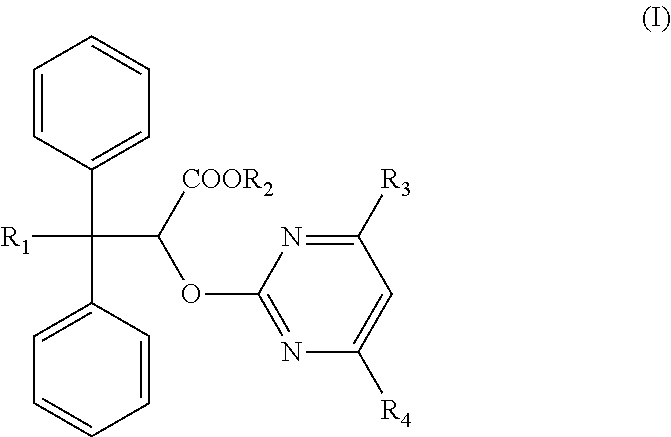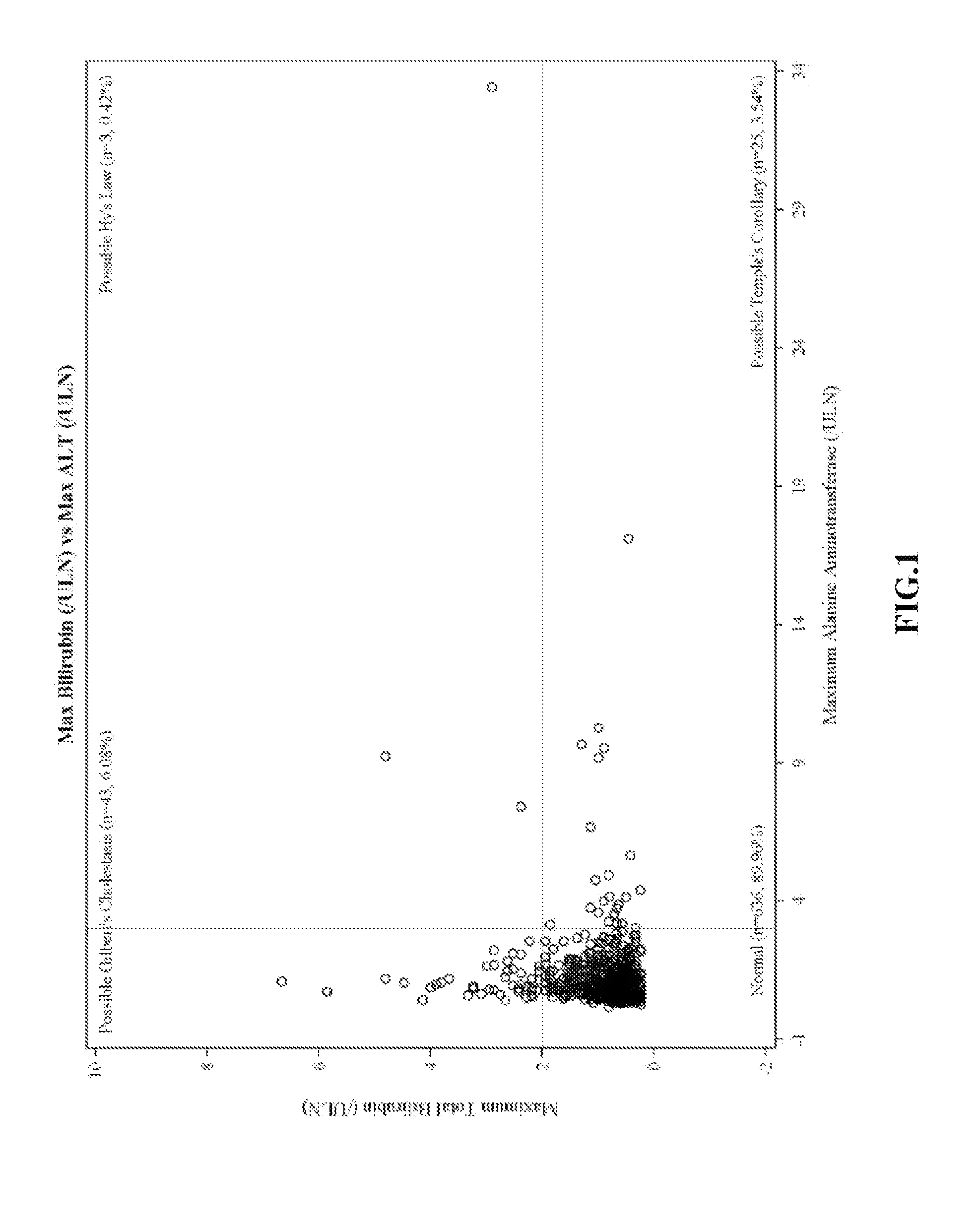Method for treating pulmonary arterial hypertension in a patient not having idiopathic pulmonary fibrosis
a pulmonary arterial hypertension and patient technology, applied in the field of pulmonary arterial hypertension treatment, can solve the problems of achieve the effect of potent therapeutic utility and greater risk of idiopathic pulmonary fibrosis progression
- Summary
- Abstract
- Description
- Claims
- Application Information
AI Technical Summary
Benefits of technology
Problems solved by technology
Method used
Image
Examples
example 1
[0187]Hepatic Safety Profile of Ambrisentan in Patients with PAH: Cumulative Incidence of Aminotransferase Elevation
[0188]The cumulative incidence of aminotransferase elevations by severity, summarized as a percentage of the cumulative number of subjects who received ambrisentan in clinical trials, is provided in Table 1. The cumulative incidence of aminotransferase elevations>3×ULN (upper limit of the normal range) accompanied by total bilirubin>2×ULN was 0.3% (2 subjects, both with alternative causes for the liver function test (LFT) abnormalities); the associated mean exposure to ambrisentan was 112.5 weeks (maximum, 341.0 weeks). In comparison, during the 12-week placebo controlled trials, 1 patient (1 / 132, 0.7%) receiving placebo had elevated aminotransferases (both alanine transaminase (ALT) and aspartate transaminase (AST) were >5×ULN) along with elevated total bilirubin (>2×ULN).
TABLE 1Distribution of Treatment-emergent SerumAminotransferase Abnormalities > 3 ×ULN in Ambrise...
example 2
[0192]Hepatic Safety Profile of Ambrisentan in Patients with PAH: Patients with Prior Aminotransferase Elevations while Receiving Sulfonamide-Based ERA Therapy Who Were Then Treated with Ambrisentan
[0193]Studies were conducted to investigate the effects of ambrisentan in subjects who had discontinued bosentan, sitaxsentan or both due to aminotransferase elevations>3×ULN. They were enrolled in studies AMB-222 (n=36) and AMB-323 (n=27). Of these subjects, 97% (35 of 36 subjects) in AMB-222 and 89% (24 of 27 subjects) in AMB-323 did not experience aminotransferase elevations while receiving ambrisentan in these studies. The remaining subjects in these studies (a total of 4 subjects) did have an aminotransferase level>3×ULN and are included in Table 1.
[0194]In two of the four subjects, the aminotransferase elevations normalized with no change in ambrisentan therapy. In one of the four subjects, the aminotransferase elevations normalized on a reduced dose of ambrisentan therapy and remai...
example 3
[0195]Hepatic Safety Profile of Ambrisentan in Patients with PAH: eDISH Plots of Clinical Trial Data
[0196]eDISH (evaluation of drug-induced serious hepatotoxicity) plots compare maximum bilirubin values to maximum ALT or AST values. Plots are divided into quadrants by superimposing lines corresponding to 2×ULN for bilirubin and 3×ULN for ALT or AST. The two right quadrants identify subjects with potential liver injury; the lower right quadrant includes subjects with ALT or AST>3×ULN. In these plots, patients are only included once and the highest bilirubin is plotted against the highest ALT / AST, without necessarily having a temporal relationship.
[0197]eDISH plots were prepared from clinical trial data. FIG. 1 shows eDISH plot comparing maximum bilirubin values to maximum ALT. FIG. 2 shows eDISH plot comparing maximum bilirubin values to maximum AST. The three subjects (2 ambrisentan-treated and 1 placebo-treated) with concurrent bilirubin (>2×ULN) and aminotransferase elevations (>3...
PUM
| Property | Measurement | Unit |
|---|---|---|
| pressure | aaaaa | aaaaa |
| pressure | aaaaa | aaaaa |
| altitude | aaaaa | aaaaa |
Abstract
Description
Claims
Application Information
 Login to View More
Login to View More - R&D
- Intellectual Property
- Life Sciences
- Materials
- Tech Scout
- Unparalleled Data Quality
- Higher Quality Content
- 60% Fewer Hallucinations
Browse by: Latest US Patents, China's latest patents, Technical Efficacy Thesaurus, Application Domain, Technology Topic, Popular Technical Reports.
© 2025 PatSnap. All rights reserved.Legal|Privacy policy|Modern Slavery Act Transparency Statement|Sitemap|About US| Contact US: help@patsnap.com



